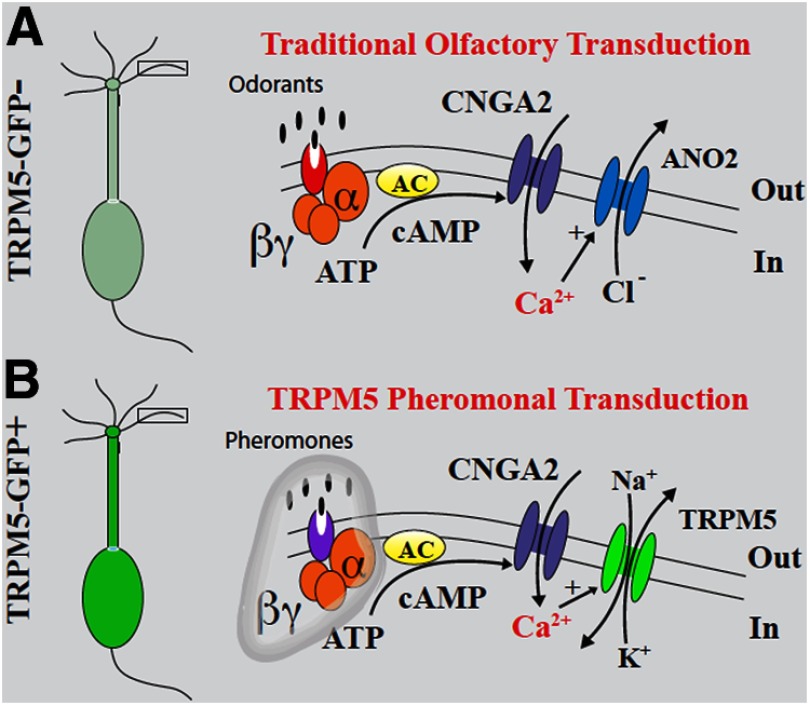Figure 9.
A, Diagrams showing the traditional ciliary olfactory pathway found in OSNs devoid of GFP fluorescence in TRPM5-GFP mice (TRPM5-GFP− cells). B, In this work, we show that CNGA2 and TRPM5 are involved in pheromonal transduction in the TRPM5- GFP+ OSNs. This diagram shows the pheromonal TRPM5 transduction pathway that we propose based on these experiments and the work of Wang and Storm, 2011 implicating the involvement of ACIII in pheromonal responses. As in odorant transduction, both pathways implicate the CNG and a role of Ca2+ entering through this channel activating ANO2 and TRPM5 in odorant and pheromone transduction, respectively. Whether Golf is involved in pheromone transduction in these cells as well, and which proteins are the pheromone receptors, remain to be determined.

